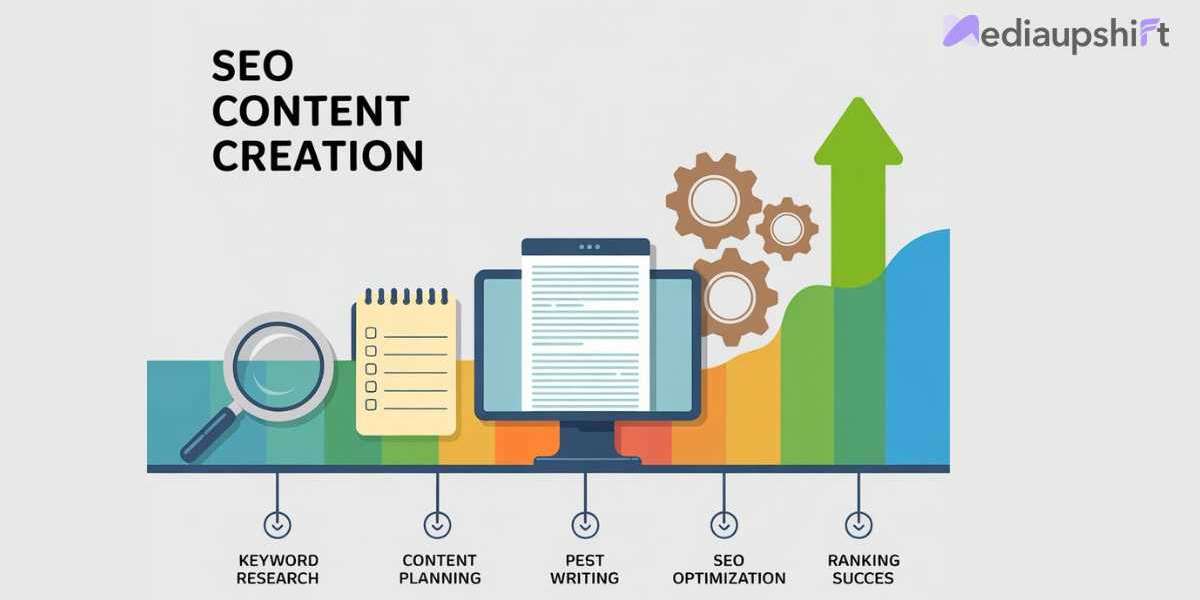In the digital age, creating great content is not just about writing well—it’s about writing content that ranks. Search Engine Optimization (SEO) ensures that your content reaches the right audience at the right time. Businesses and individuals alike rely on SEO-driven content writing to attract organic traffic, build credibility, and achieve long-term growth.
But how exactly can you write content that both engages readers and performs well on search engines? This step-by-step guide will walk you through the process of content writing for SEO, offering practical tips you can implement immediately.
Step 1: Understand Your Audience
Before you put pen to paper (or fingers to keyboard), you must know who you’re writing for. SEO content writing is not about pleasing algorithms alone—it’s about meeting the needs of your target audience.
Ask yourself:
Who is my ideal reader or customer?
What problems are they trying to solve?
What type of content will they find valuable—blogs, guides, or how-tos?
By building a detailed audience persona, you can create content that resonates with your readers and improves engagement metrics, which in turn positively influence search rankings.
Step 2: Conduct Keyword Research
Keywords are the foundation of SEO content writing. They are the phrases your audience uses when searching online. Effective keyword research helps you uncover what your audience is actively looking for and ensures your content is discoverable.
Tools like Google Keyword Planner, Ahrefs, or SEMrush can help you:
Find high-volume, low-competition keywords.
Identify long-tail keywords (e.g., “best content writing tips for SEO beginners”).
Analyze competitors’ keywords.
When integrating keywords into your content, focus on natural usage. Overstuffing keywords may lead to penalties from search engines and a poor user experience.
Step 3: Craft an SEO-Friendly Structure
Search engines love well-structured content. Proper formatting not only makes your content easier to read but also helps search crawlers understand it better.
Here’s how to structure your content:
Use H1 for the main title (your primary keyword should appear here).
Break down sections with H2 and H3 subheadings.
Use short paragraphs and bullet points for better readability.
Include internal and external links to add context and credibility.
A clear, organized structure improves user experience, which directly impacts how long readers stay on your page.
Step 4: Write Engaging and Valuable Content
Now that you know your audience and keywords, it’s time to write content that provides real value. Google prioritizes content that is helpful, original, and relevant.
To create high-ranking content:
Start with a compelling introduction that hooks readers.
Focus on solving problems or answering questions.
Incorporate examples, case studies, or statistics to build credibility.
Avoid fluff—make every sentence meaningful.
Use a conversational tone that resonates with your target audience.
Remember, SEO is not just about ranking—it’s about delivering value to real people.
Step 5: Optimize On-Page SEO Elements
On-page SEO refers to all the optimizations you make within your content and webpage. Some key elements include:
Meta Title and Meta Description: Write a compelling title (with your primary keyword) and a concise description that encourages clicks.
URL Structure: Keep URLs short and keyword-rich (e.g., www.example.com/seo-content-writing-tips).
Image Optimization: Add descriptive file names and alt text to improve visibility in image search.
Keyword Placement: Naturally include your primary keyword in the first paragraph, headings, and throughout the content.
These optimizations ensure that search engines can properly index your content while enhancing its visibility.
Step 6: Focus on Readability and User Experience
Search engines increasingly prioritize user experience signals. If your content is difficult to read or navigate, users will leave quickly—signaling to Google that your page is not valuable.
Improve readability by:
Using simple language and avoiding jargon.
Keeping sentences and paragraphs short.
Adding visuals, infographics, or videos to break up text.
Using plenty of white space to avoid overwhelming readers.
The easier your content is to consume, the more likely users will stay longer, reducing bounce rates and improving rankings.
Step 7: Promote and Build Backlinks
Publishing content is just the beginning. To rank higher, you need to promote your content and build backlinks from authoritative sites. Backlinks act as votes of confidence, signaling to search engines that your content is trustworthy.
Ways to build backlinks include:
Guest posting on reputable websites.
Reaching out to industry influencers.
Creating shareable content like infographics or research reports.
Promoting your content across social media platforms.
For example, companies like mediaupshift have demonstrated how strategic content promotion and link-building can significantly enhance rankings and brand authority.
Step 8: Update and Refresh Content Regularly
Search engines favor fresh, updated content. By revisiting older posts, adding new information, and optimizing outdated sections, you can maintain rankings and even boost them over time.
For example:
Update statistics with the latest data.
Expand sections with new insights.
Add internal links to newer content.
Regular updates show both users and search engines that your website is active and relevant.
Step 9: Track Performance with Analytics
Finally, measure the effectiveness of your SEO content using tools like Google Analytics, Search Console, or SEMrush.
Key metrics to track include:
Organic traffic.
Average time on page.
Bounce rate.
Click-through rate (CTR).
Keyword rankings.
By analyzing performance, you can identify what’s working, refine your strategy, and continue to create content that ranks.
Conclusion
Content writing for SEO is both an art and a science. It requires balancing creativity with technical know-how to create content that not only appeals to readers but also ranks well in search engines. By understanding your audience, conducting keyword research, optimizing your content, and continuously promoting and updating it, you can achieve lasting success.
Whether you’re a blogger, business owner, or marketing professional, following this step-by-step guide will put you on the path to higher rankings and stronger online visibility. Remember: SEO-driven content is not about tricking search engines—it’s about delivering genuine value in a way that both people and algorithms appreciate.








